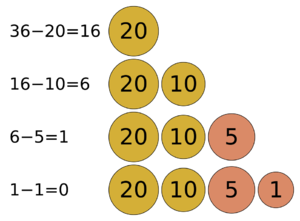Greedy algorithm (nonfiction)

A greedy algorithm is an algorithmic paradigm that follows the problem solving heuristic of making the locally optimal choice at each stage with the intent of finding a global optimum. In many problems, a greedy strategy does not usually produce an optimal solution, but nonetheless a greedy heuristic may yield locally optimal solutions that approximate a globally optimal solution in a reasonable amount of time.
For example, a greedy strategy for the traveling salesman problem (which is of a high computational complexity) is the following heuristic: "At each step of the journey, visit the nearest unvisited city." This heuristic doesn't intend to find a best solution, but it terminates in a reasonable number of steps; finding an optimal solution to such a complex problem typically requires unreasonably many steps. In mathematical optimization, greedy algorithms optimally solve combinatorial problems having the properties of matroids, and give constant-factor approximations to optimization problems with submodular structure.
In the News
January 10, 2018: The Algorithmic Paradigm Treaty Organization (APTO) files math crime charges against greedy algorithms.
September 4, 1973: An experimental graph coloring model accidentally generates a Greedy coloring computer virus which causes the color green to become red in the vicinity of every computer terminal around the world. The virus will be eliminated several hours later by APTO troubleshooters, restoring green to its normal appearance.
Fiction cross-reference
Nonfiction cross-reference
- Algorithm (nonfiction)
- Algorithmic paradigm (nonfiction)
- Greedy coloring (nonfiction)
- Mathematics (nonfiction)
External links:
- Greedy algorithm @ Wikipedia


